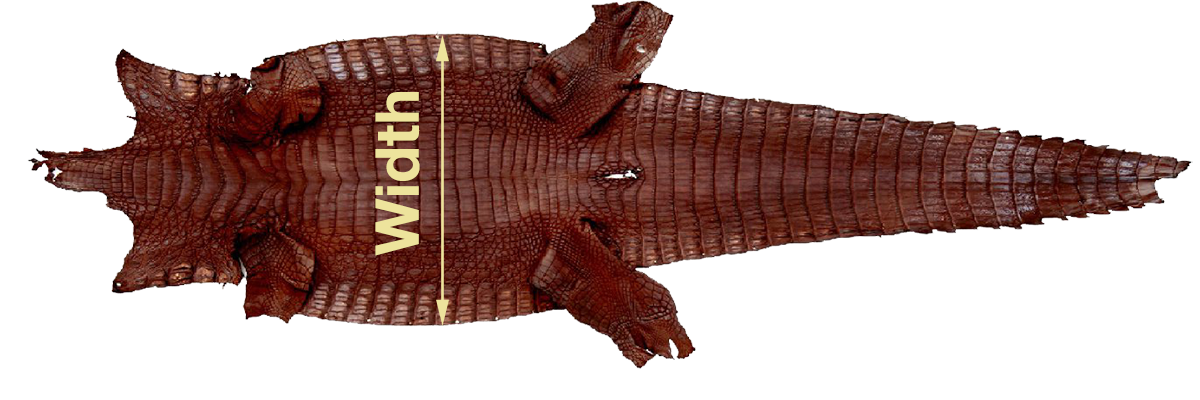3 minutes reading
Crocodile leather goods are the most luxurious goods you can find on the market. If you're interested in creating a leather item using crocodile skin you must know the following:
1) Where Does Crocodile Leather Come From?
Nowadays, Crocodile Leather or Crocodile Skin, only comes from breeding farms destined to growth of these wild animals. The commonly bred crocodile species are:
- Freshwater Crocodile (Crocodylus Novaeguineae)
- Saltwater Crocodile (Crocodylus Porosus)
- Nile Crocodile (Crocodylus Niloticus)
- Caiman Crocodile (Crocodylus Fuscus)

Each species has its own features, therefore when you're going to buy a crocodile hide, the choice mainly depends on which type of crocodile leather goods you want to create.
2) How Crocodile Skin Are Measured?
First of all, we must say that crocodile skins can be presented with two different type of cuts:
Belly Cut: where the Belly is fully preserved, it's the most common used in the production of leather goods
Back Cut: where the Back is fully preserved, it's used less frequently, if you're looking for highly textured leather product and create a visual effect that get the attention.

To determine the value of a crocodile skin, this is measured across the width at the widest point of the body, and the price of the crocodile leather is usually expressed in €/cm.
The larger the body size, the older the crocodile and the higher the price per centimeter will be. It follows that the price of crocodile skin grows exponentially with its size.

3) Why Crocodile Leather Is So Expensive?
Crocodile skin is considered one of the finest leathers, which it's usually used to make luxury items. Most of the top brands in the world (Louis Vuitton, Gucci, Versace, ecc.) use crocodile skins in their highest quality items. Like all luxury goods, the value of this skin is due to the "scarcity", the difficulty of the tanning processes and the limitations due to the size of the skin.
The price of crocodile leather varies increasingly according to the size of the skin. This is due to the time it takes for a crocodile to grow, and to the breeder's cost of keeping an adult crocodile. To have and idea of the growth of a crocodile we can say that:
- 20-24 cm (1 year of breeding)
- 25-29 cm (1.5 years of breeding)
- 30-34 cm (2 years of breeding)
- 35-39 cm (2.5 years of breeding)
- 40-44 cm (3 years of breeding)
- over 45 cm (3.5 years or more of breeding)
One of the problem of breeding crocodiles is that being "rough and wild“ animals, it's rare that they reach adulthood without scars or other signs, that's why a clean crocodile skin is so expensive.
4) Is Crocodile Skin Legal?
Legislation concerning the trade in crocodile skins varies from country to country. In the European Community, crocodile skins are exclusively imported because there are no climatic conditions fro crocodile breeding farms, so skins are subject to the CITES regulation.
CITES (Convention on International Trade in Endangered Species of wild fauna and flora) is a convention that regulates the trade in exotic leather (including crocodile species) and guarantees that this trade is carried out in a sustainable manner for the environment.
There fore it's important (if you decide to buy a crocodile skin) that the supplier provide you with the CITES of the product purchased.



